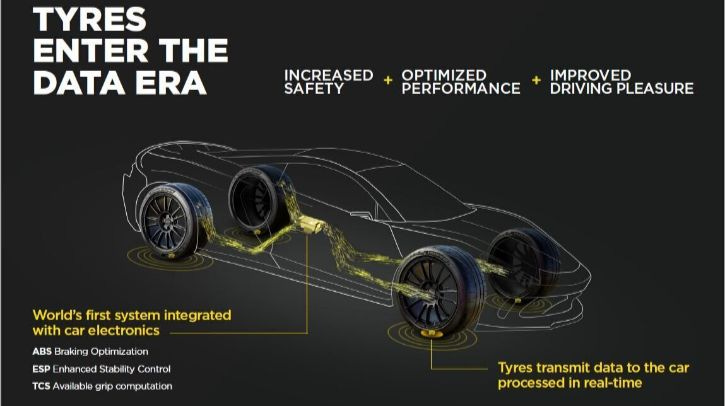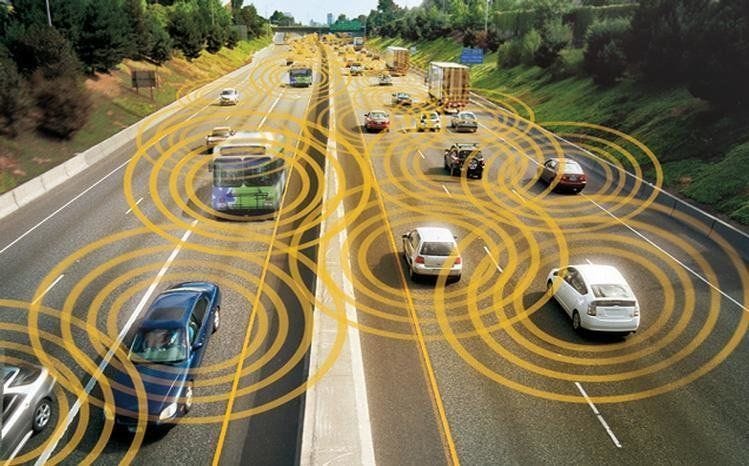The Tire Is Now The API
Pirelli’s Cyber Tyre links handling, cost control, and smart-city ops—if geopolitics allows
ESCORT is the leader in premium, high-performance radar detectors and driver alert systems. They bring together advanced product technology to build solutions with extreme range detection, complete 360° directional awareness, accuracy against false alerts, and stealth capabilities. ESCORT users can access the exclusive driver community for real-time and shared driving alerts. With its class-leading Redline, MAX, and Custom Install series, ESCORT leads the industry in developing and marketing global solutions that empower people to Drive Smarter and Safer.
Aston Martin's commitment to Pirelli's Cyber Tyre technology marks more than just a new premium automotive partnership—it positions the British automaker as the first major production brand to plan on integrating tire-embedded sensors as core vehicle technology. But this move is just one part of how motorsport-grade data is redefining not only vehicle performance but also public infrastructure management.
Beyond its automotive announcement, Pirelli is demonstrating a broader vision through its partnership with the Apulia (Puglia) regional government in southern Italy. Here, standard fleet tires function as rolling sensors, continuously sending road-condition data to public works dashboards, enabling proactive maintenance and smarter resource allocation.
Simultaneously, these projects demonstrate how technology initially designed for lap-time optimization on the racetrack can create new business models. Instead of limiting innovation to driver experience, tire intelligence now plays a measurable role in cost control, infrastructure upkeep, and regulatory navigation.
Inside Pirelli's Cyber Tyre
Unlike conventional sensor systems mounted on the valve stem, Pirelli’s solution embeds sensors within the tire’s inner tread. According to manufacturer specifications, each unit weighs about 10 grams and is rated to withstand forces exceeding 3,500 Gs, operating over Bluetooth Low Energy with a service life designed to match tire longevity.
This approach unlocks a stream of data beyond pressure and temperature:
Real-time inflation and temperature monitoring
Load distribution and contact-patch dynamics
Grip levels and hydroplaning risk, inferred from capacitance and slip ratio
Pothole and roughness quantification for public works applications
By delivering this data in real time, Cyber Tyre directly informs Electronic Stability Programs, ABS, and traction control—enabling predictive rather than reactive interventions on everything from race circuits to city streets.
Motorsport-Grade Tech Meets Real-World Constraints
The McLaren Artura debuted as the first production car equipped with Cyber Tyre as standard, serving as a testbed for both benefits and barriers to adoption. While these tires deliver race-engineer-level feedback—including optimal temperature windows and personalized pressure guidance—they also come at a steep premium: over $1,000 per tire. European dealers have reported full sets exceeding $8,000, with supply shortages sometimes forcing owners to revert to standard Michelins and forgo the full suite of monitoring features.
This real-world feedback loop illustrates that scaling advanced sensor technology from prototype to the street is as much about cost and logistics as it is about engineering.
Pagani’s Utopia Roadster takes integration further: Bosch Engineering has developed custom vehicle dynamics controls specifically to leverage tire-derived telemetry, showing the full potential when digital infrastructure and vehicle platforms are designed in tandem.
Public-Private Road Monitoring
Launched in July 2025, Italy’s Apulia smart road project is among Europe’s first government-partnered pilots using tire sensors as a tool for continuous infrastructure assessment. The initiative involves:
Fleet vehicles managed by Ayvens (with over 3.3 million vehicles globally)
Sensor data merged with AI-powered analytics from Swedish firm Univrses—whose platform simultaneously surveys road conditions, signage, and traffic flows.
Immediate dashboard access for regional public works officials
Governor Michele Emiliano called the technology “a thermometer of the state of health of our roads.” Unlike periodic, manually driven surveys, this solution delivers continuous, route-level monitoring embedded in daily fleet operations—enabling faster repairs and improved safety.
Notably, this public-private model also eliminates direct government costs, while providing Pirelli with a live laboratory to refine its infrastructure-class algorithms.
Pirelli’s regional presence extends beyond rubber and sensors. Its Digital Solutions Center (DSC) in Bari, which opened in December 2022 and now employs over 50 specialists, anchors digital development for its global network. Designed as an in-house software and R&D hub, the center connects local teams with 500 digital experts worldwide. It actively partners with institutions such as the University of Bari and Bari Polytechnic on manufacturing optimization, digital twin modeling, and smart materials.
By consolidating R&D and real-world pilot activity in one region, Pirelli accelerates algorithm development, IoT integration, and opens new avenues for public-private collaboration.
Luxury Tech Faces the Regulatory Gauntlet
Aston Martin’s plan to integrate tire connectivity into its next wave of models (2024–2026) comes at a time when regulatory questions loom largest in the U.S.—its most important export market after Europe.
In the United States, planned restrictions on Chinese-controlled automotive components, scheduled for 2027 for software and 2029 for hardware, could threaten long-term access to this technology, given Sinochem’s 37% stake in Pirelli. In April 2025, Pirelli’s board invoked Italy’s “golden power” rules to assert independence from foreign control, but the actual regulatory outcome remains unresolved.
Europe continues to prove more receptive: projects like the Apulia pilot leverage both government support and pre-existing digital investment, suggesting a pathway for expansion that aligns local jobs, public benefit, and industry innovation.
Scaling, Security, and the Road Ahead
While the high per-tire cost of Cyber Tyre currently limits widespread adoption beyond ultra-luxury segments, fleet-level and public infrastructure applications could drive meaningful scale. By shifting from consumer to enterprise and government customers, Pirelli demonstrates that premium sensor technology can deliver value as a service—reducing emergency repairs, enhancing resource planning, and generating new revenue streams—all without requiring mass-market adoption overnight.
Of course, the rapid expansion of connected vehicle data poses new questions. Detailed usage and location data must be managed to meet both European data privacy standards and evolving U.S. security rules.
Smart Tires as City Sensors
As future pilots move beyond road surfaces to include bridge, tunnel, and even airport monitoring in partnership with operators like Movyon (Autostrade per l’Italia), the concept of the tire as a node in a wider infrastructure web becomes a reality.
Sooner than later, features like V2V hazard alerts and full V2I data have the potential to reshape everything from maintenance routing to emergency response—forming the backbone of next-generation, responsive cities.
You are receiving this email because you subscribed to Business of Speed, the newsletter for those wanting to stay ahead on what’s happening behind the scenes. I’m Vincenzo Landino, a business, tech, and F1 commentator. I’ve spent the last ten years at the intersection of content, partnerships, and the business of motorsport. This newsletter is where I break down what’s working, what’s shifting, and what’s next without the PR gloss. Thank you for being here.










This is a brilliant concept. But as with F1 telemetry, the real question is: who owns the data? Tire data is valuable, both to the Pirelli and the Teams. If it’s treated like open source telemetry, it could unlock innovation, but it also raises competitive and commercial concerns. In racing, every additional sensor creates an edge, but only if the data is controlled and contextualized. How this plays out in the broader mobility space will be fascinating.